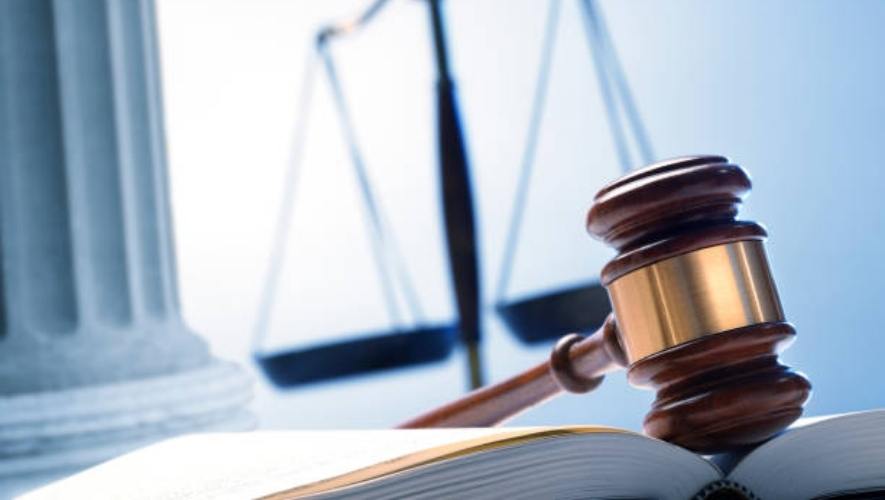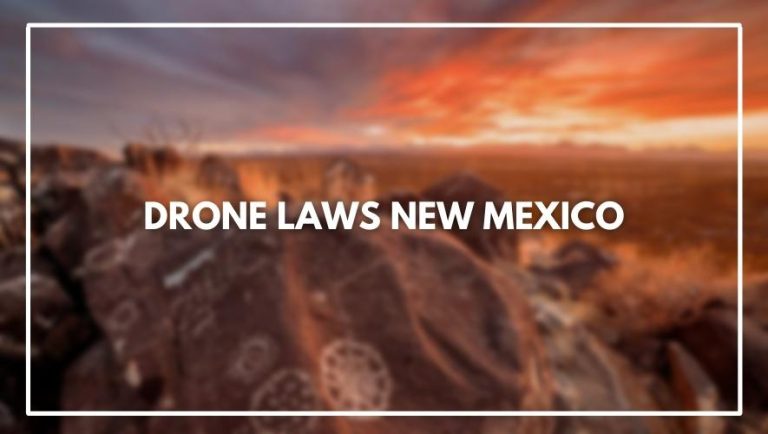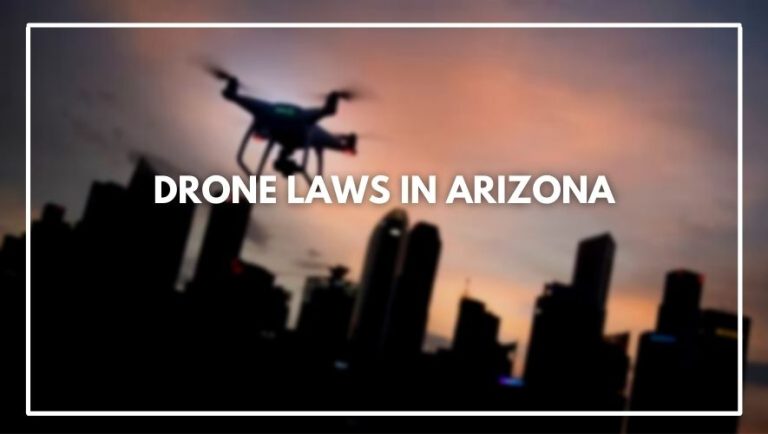As drones become more popular, laws are made to come in and regulate their use. This is good for everyone involved as it makes sure that people aren’t behaving recklessly or doing anything dangerous with them.
The laws as they stand right now are protecting all of us, but you need to understand the drone laws in Edmonton, if you plan on using them properly.
Drone Laws Edmonton

Summary Of The Rules
The Canadian Aviation Regulations require that all drone pilots follow two sets of rules to ensure public safety. The first rules are the basic operating requirements that apply to all pilots, and the second set is specific regulations for recreational drone pilots.
The general operating and flight conditions requirement for recreational drones include:
- All drone pilots in Edmonton must follow the rules in the Canadian Aviation Regulations (CARs).
- No person shall operate a remotely piloted air-craft system in such a reckless or negligent manner as to endanger or be likely to endanger aviation safety or the safety of any person.
- The drone cannot fly more than 90 meters above the ground, except with a special waiver from Transport Canada. The operator must maintain visual line-of-sight at all times.
- Drone pilots must carry a valid drone pilot certificate and only fly drones that are marked and registered.
- You must stay at least 30 meters away from people, animals, buildings, and vehicles not in operation.
- You must request a flight authorization from the appropriate aerodrome authorities if you want to operate in controlled airspace (Classes C, D, or E).
- All drones weighing between 250 grams and 25 kilograms must be registered with Transport Canada
- Recreational drones must be flown below 122 meters (400 feet) above the ground unless authorized by Transport Canada.
- All recreational drones must stay 5 kilometers away from airports, heliports and aerodromes unless authorized by Transport Canada.
- All drones must be kept away from emergency response efforts on the ground such as fires, traffic accidents or search and rescue operations.
- The operator must keep the drone in visual line of sight at all times.
- Drones cannot be flown if there is any precipitation or strong wind conditions or if it would interfere with other air traffic nearby. This also applies during thunderstorms and cloud cover of 3/8th coverage or less.
It Is Illegal To Fly Your Aircraft (or Model Aircraft) Over Private Property
A popular recreational activity, especially among teenagers and young adults, is flying remote-controlled aircraft, sometimes called drones. Many people are unaware of the regulations surrounding this pastime.
In Edmonton, it is illegal to fly a drone over private property without consent of the owner or occupant of that property. Additionally, it is illegal to fly a drone over public property without prior written consent from the municipality in which you wish to fly your aircraft.
The fine for breaking these rules can be up to $100 per incident and can increase depending on how many times you have been previously fined for violating this rule.
However, there are a few types of properties where you can legally enjoy using your aircraft:
- You may fly your aircraft over federal land as long as you do not interfere with any industries that may be taking place on these lands (such as oil refineries).
- You may also fly your plane around provincial parks if it remains at least 300 metres away from any buildings or campsites located within those parks.
You Cannot Fly At Night
It’s a common misconception that all drones can be flown at any time of day. In fact, in the United States, it’s illegal to fly one after sunset. This is because the Federal Aviation Administration believes flying at night poses too many risks for both pilots and people on the ground.
What does “too many” mean? When it comes to flying a drone, the FAA sees three main categories of risks:
- The risk associated with flying in low visibility (such as fog or rain)
- The risk associated with piloting a drone from a more distant location via an electronic link instead of standing nearby using line-of-sight control
- The risk that comes from people not understanding how to use consumer drones safely—in other words, user error and lack of education on safe operation practices
Never Fly Less Than 500 Feet Above The Ground
It is illegal to fly a drone below 500 feet in Alberta, Canada. This rule exists to protect people on the ground from injury and damage caused by drone impacts.
If you are spotted flying below 500 feet, you can be fined $250 per violation. That’s not very nice! Don’t do it! The only way to legally fly a drone under 500 feet is with explicit permission from the governing body of your province or territory.
You Cannot Endanger Anyone
Before you take your drone out for a spin, it’s important to understand the laws and regulations that govern how you can fly.
What you’re allowed to do with a drone depends on where you are flying it, who is flying it and what kind of drone you have. According to Transport Canada, if you want to operate your drone in any of the following areas, then you must follow these rules:
- You cannot fly within nine kilometres of an airport or heliport.
- You cannot fly closer than 30 meters from people without their consent, vehicles without their consent or buildings without their consent (unless taking off or landing).
- You cannot fly closer than 9.15 kilometers from the center line of any highway (“highway” means a road that is publicly maintained and open to the public for use by motorized vehicles).
- You cannot fly closer than 150 meters from any forest fire or forest fire control ground operations (forest fire means an ignited combustible material in forests, other than a forest fire caused by lightning).
- You may not conduct aerial work (such as aerial photography, surveying and wildlife spotting) without authorization from Transport Canada.
Keep The Drone Within Sight Of Yourself
The federal government, along with individual province and municipalities, has enacted laws concerning the operation of unmanned aerial vehicles (UAVs or “drones”) within their jurisdictions. The following information is intended to be an overview of these laws in the City of Edmonton, Alberta.
A drone pilot must always keep the UAV within his or her line of sight and observe any other restrictions that may apply. If a pilot loses sight of a drone, he or she may not continue to operate it until it can be seen again. A spotter who is able to see the UAV may also act as a substitute for keeping it in sight.
If you are taking photos with your drone you cannot use binoculars during flight to get closer look at something you are photographing.
Droning from above an event is illegal without permission from the event organizer and requires flying only during intermission breaks when it won’t impact participants’ view below them. If there isn’t an intermission break planned then get permission ahead of time before you fly there.*
It’s illegal to fly over hospitals and care facilities like seniors homes unless given special permission by both the facility and Transport Canada.*
The Drone Cannot Go Faster Than 100 Km/hr
In Edmonton, Canada, a city that is known for its wide avenues and beautiful parks, the speed limit for a drone can’t exceed 100 kilometers per hour (62 miles per hour). This rule was created to protect the safety of citizens and to ensure that no one crashes into another person or object.
Keep Clear Of Emergency Scenes
At first, flying above the city seemed like a fun way to get some spectacular vistas of the landscape. But it quickly became apparent that hobbyists who want to fly must find other ways to enjoy their time in this beautiful place. There is simply no way it’s worth risking being grounded and facing a hefty fine just to get a few aerial photos and videos.
For starters, all drones are prohibited in most areas of Edmonton, including parks, golf courses, schools, hospitals and so on; they’re also banned on the grounds of all large public events—including those taking place at sports stadiums or arenas and concerts that draw tens of thousands of people.
The rules vary by area or event, but most include an injunction against flying within 500 metres (1,640 ft) of any event venue or public gathering.
Not only are hobbyists likely to face fines for breaking these rules; they may also be arrested if they have any part in harm-threatening activities like fleeing from police officers or starting fires.
Rules To Follow
Whether you’re a hobbyist who just wants to take aerial shots of your property and pets, or you’re an aviation enthusiast who wants to shoot footage for professional purposes, the rules for flying almost any kind of drone in Edmonton are the same.
If you fly your drone in public places, such as parks and school grounds, ensure that you are within line-of-sight of the remote operator; this means that if someone is on foot, they can see the drone clearly from where they are standing. If they cannot see it while looking directly up at it, it may be too far away or moving too quickly.
In a city’s airspace, such as downtown Edmonton or along the river valley trail system, pilots must follow rules established by Transport Canada and take special care when using drones over people (the safety of which is paramount).
You do not have approval to fly a drone over private property without permission from the land owner—even if there’s no one on the property to spot you flying above it.
How To Register Drone In Edmonton

Register Your Drone And Get A Permit
To the uninitiated, Canada’s drone laws can seem downright prohibitive. While recreational use was legalized in 2015, even the most casual pilot is required to register his or her device with Transport Canada and pay a $5 fee.
Commercial use of drones, meanwhile, is still strictly forbidden unless you’ve obtained a permit from the Ministry of Transportation—even if that commercial use will take place several miles away from any airport.
That said, there are exceptions to these rules. Do you need to fly your drone for work purposes? Then it all comes down to what you consider work and what Transport Canada considers work (spoiler: pretty much anything related to making money is considered work).
The Canadian government has been slowly easing up on its stance against non-recreational drone use over the past few years; as long as you’re complying with all relevant laws—including those governing privacy—you should be able to fly without too much trouble.
Still, it never hurts to check in with your local law enforcement agency before getting started; some areas may have additional restrictions on where or when you can fly your machine.
Register And Label Your Drone In Edmonton If It Weighs More Than 250g (0.55lb)
In Edmonton, it is illegal to fly drones that weigh more than 250g without registering it with the EPS (Edmonton Police Service). If your drone weighs less than 250g you do not need to register. If your drone weighs between 250g and 1kg, you may choose to register.
- Type of drone (ex. quadcopter)
- Manufacturer of drone
- Make of transmitter if used
- Your name, address, and date of birth
- Picture of yourself holding your driver’s license. It must be current and show a full front view of you.
- Receipts for the purchase price or proof of ownership if your drone was given as a gift or inherited
Registration Costs
- You can register your drone with the EasyTracks app or on the Service Alberta website
- The current cost is $5 (for drones with a weight of up to 25 kilograms)
- Registration fee is valid for 3 years, and you can renew online for free
- You need to provide your name, phone number, address and email address when applying for registration. Make sure the information provided here is correct. You won’t be able to update the information once you’ve registered.
You can also get some discounts if:
- You’re a youth (13-18), a senior (65+) or are a student enrolled in an institution in Alberta; OR
- If you fly only for recreation and not for business purposes
Your Registration Is Valid For Three Years
Registering your drone with the City of Edmonton is a simple process. As long as you’re over 18 years old, you can register on the city’s website—just be sure to use a real email address so that you receive a confirmation once it’s done.
All drone owners have to provide is their name, address, phone number and email address along with the serial number of their UAV. Once registration goes through, you’ll get an email confirming it’s complete (make sure to check your spam folder). You’ll also be able to verify if it’s registered online. Registration is valid for three years.
You Can Use Edmonton’s Online Registration System
- Registering your drone for flying in Edmonton is easy and the process takes less than a minute. At first, you might think that registering by mail or online is the easiest method, but it turns out it’s actually best to complete the online registration as soon as possible—and let me tell you why.
- The sooner you register your drone, the more time you have to get used to its new mode of transportation. In addition, if something goes wrong during your flight, we can help troubleshoot and resolve any issues that may arise.
Before Flying Your Drone, Check Out Which Areas Allow Drone Flight And Which Do Not
Before you start flying your drone anywhere in Edmonton, it’s best to check out the city’s map of restricted areas.
By downloading this map, you can see exactly where drone flight is not permitted, including:
- Edmonton International Airport
- Provincial airports
- Provincial military bases
- Provincial parks and recreation sites
Frequently Asked Question (drone Laws Edmonton)
Am I Allowed To Fly My Drone In My Backyard?
Yes, you can fly your drone in the backyard of your home. You must keep it in your line of sight at all times and make sure that it doesn’t fly higher than 90 metres over ground level (or 120 metres if you have a pilot’s licensee). You must also not fly within 30 metres of buildings or people, or within 5.5 kilometres of an airport.
Do I Need Permission To Fly Over Private Property?
Yes, you need written permission from the property owner to fly over private property. If you do not have permission from the landowner, your drone could be confiscated by police.
If you are using a drone for work on private property, then it may be possible for you to get around this requirement. For example, if someone has hired you to survey their land or photograph their house as part of a commercial project (e.g., selling houses), then they might agree in advance that they will allow you access to their property so that they can get a good picture of what’s going on there.
What Are The Legal Heights For Drones?
- The legal heights for drones are:
- – 50m above ground
- – 100m from buildings, vehicles and people
- – 300m from aerodromes
- – 400m from helipads (if you are permitted to fly over the helipad)
- * Note that if you live close to a hospital or other care facility, your local authority may have additional restrictions on where you can fly. They may also require that all flights be made during daylight hours only. If so, make sure to check with them before taking off.
Can I Fly In A Park Or By A Lake?
You can fly drones in parks, as long as you follow the park’s rules.
There are also some important safety tips to keep in mind:
- Don’t fly above lakes or ponds (or anywhere else with water) because it could cause an electric shock to people who are nearby.
- Don’t fly over crowds of people, or near playgrounds or sports fields during games and tournaments.
- Be sure to observe any other restrictions that might be posted at your chosen launch site–and always check your local laws before taking off!
Conclusion
In the interest of both safety and privacy, drone laws in Edmonton will likely continue to grow in complexity. There are already plenty of rules and regulations when it comes to flying a drone in the city, so users will simply have to stay up-to-date on any changes as they roll out.
Drone-makers will also need to be more proactive in providing information about their products and take an active role in making sure owners know – and follow – all applicable laws.






